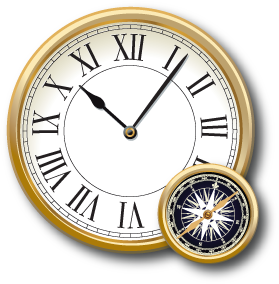Finding longitude at sea was a major preoccupation in France.
Thanks to a bequest from Rouillé de Meslay, the French Academy of Sciences offered prizes for improving navigation and scientific voyaging beginning in 1714, just before the English Parliament’s prize was authorized. By the 1760s, two competing clockmakers—Pierre LeRoy and Ferdinand Berthoud—devised marine timekeepers that underwent test voyages in 1769 and 1771.
Pierre LeRoy
After building three earlier marine timekeepers, Pierre LeRoy completed a sea clock in 1766 that contained the elements of the modern chronometer—a specialized escapement, a specialized balance spring, and a balance that compensated for temperature changes. In 1769, the academy rewarded him with a Meslay prize for his work. Like Harrison’s timepieces, LeRoy’s were complex, and his work was not copied directly by others.
Ferdinand Berthoud
A Swiss expatriate working in Paris, Ferdinand Berthoud, saw John Harrison’s earliest marine clocks in England and went on to produce his own. His timekeepers never bested Pierre LeRoy’s in sea trials, but Berthoud made many more than his rival. He claimed that over 50 of his timepieces went on 80 voyages. One of Berthoud‘s sea clocks, an uncommon weight-driven design, inspired Boston clockmaker William Bond to make a chronometer in the same style.






